|
He is the Rev. Jenneth C. Scott, vicar of the Church of the Ascension, who served in World War I, receiving a shattered arm in combat. He suggested that English-speaking Germans apply for British citizenship and also recommended sincere reciprocal prayers. |
|
Veteran of the Spanish-American War, too old for World War I, he became a casualty of World War II. Taking a Government job after 30 years in the Army, he went to the Philippines. He served on Bataan and Corregidor. |

VOL. III NO. 15 REG NO. L5015 DELHI, THURSDAY DECEMBER 21, 1944
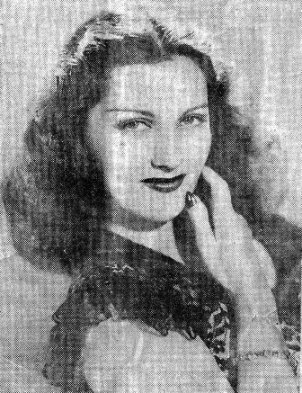 The sweetie-pie filmed above is Rose Marie Volin, a member of USO Troupe 269. We are informed via one thoroughly
signed petition that she is the Sweetheart of the Regiment, the regiment in question being a part of the Mars Task
Force.
The sweetie-pie filmed above is Rose Marie Volin, a member of USO Troupe 269. We are informed via one thoroughly
signed petition that she is the Sweetheart of the Regiment, the regiment in question being a part of the Mars Task
Force.
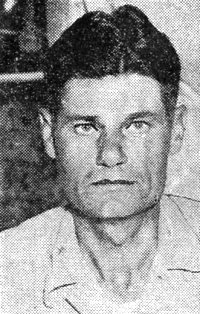
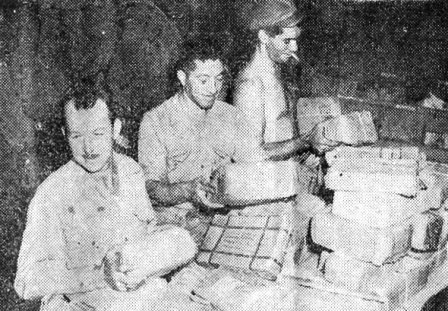 Christmas packages of American troops on the Northern Burma front arrive by the truck-load. Cpl. Rodney W. Robinson,
Cpl. Max Spindel and Pvt. Joe T. Fox officiate.
Christmas packages of American troops on the Northern Burma front arrive by the truck-load. Cpl. Rodney W. Robinson,
Cpl. Max Spindel and Pvt. Joe T. Fox officiate.
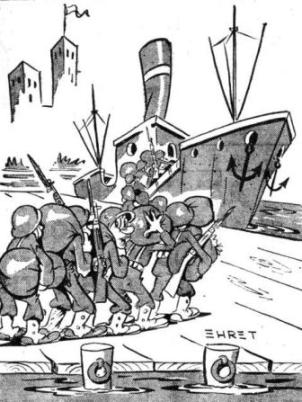
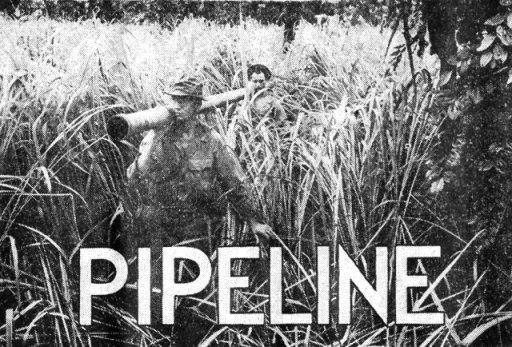
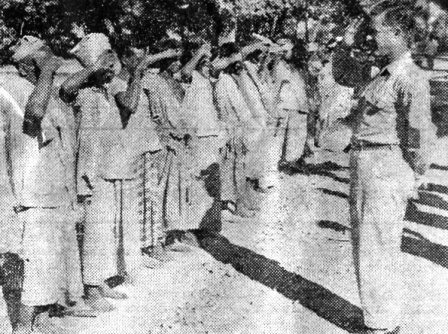 Pfc. Adolph P. Scallon, having had 200 salutes thrown at him by Indian laborers each morning for five months, will
soon be qualified to be a second lieutenant. Pfc. Scallon is burra sahib in charge of 200 workers employed by the
"Black Ange" Squadron of the "Earthquaker" Bombardment Group.
Pfc. Adolph P. Scallon, having had 200 salutes thrown at him by Indian laborers each morning for five months, will
soon be qualified to be a second lieutenant. Pfc. Scallon is burra sahib in charge of 200 workers employed by the
"Black Ange" Squadron of the "Earthquaker" Bombardment Group.
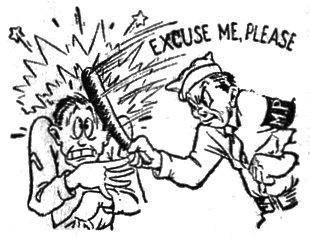 as it tends to excite the soldier involved and complicates the situation.
as it tends to excite the soldier involved and complicates the situation.
 Lt. Dan I. Sultan, Commanding U.S. Forces in India and Burma, in the cockpit of his personal aircraft, "Sultan's
Magic Carpet," christened this week at Gen. Sultan's headquarters. (Photo by Capt. Tom C. Dillard, A.C.)
Lt. Dan I. Sultan, Commanding U.S. Forces in India and Burma, in the cockpit of his personal aircraft, "Sultan's
Magic Carpet," christened this week at Gen. Sultan's headquarters. (Photo by Capt. Tom C. Dillard, A.C.)
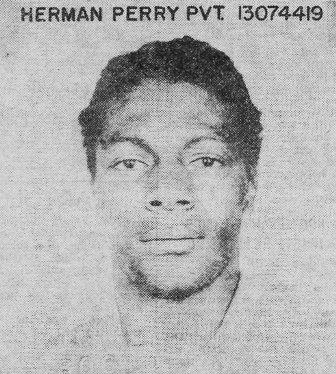
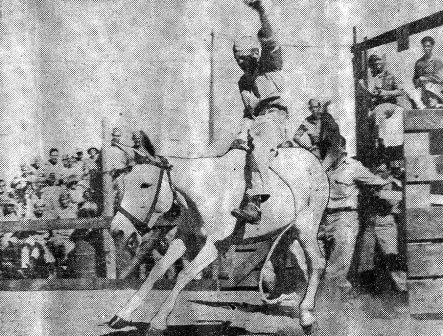 Cpl. Bill Martin of Seymour, Tex., shows the Karachi crowd how mule-riding is done in Texas. Or is it? A crowd
of 7,000 enjoyed the show.
Cpl. Bill Martin of Seymour, Tex., shows the Karachi crowd how mule-riding is done in Texas. Or is it? A crowd
of 7,000 enjoyed the show.

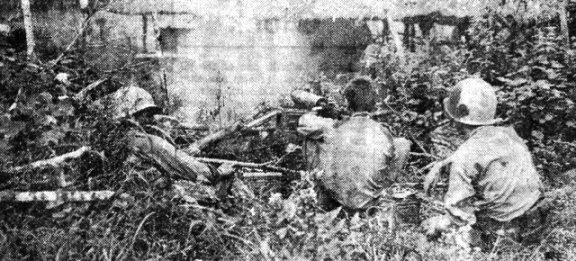
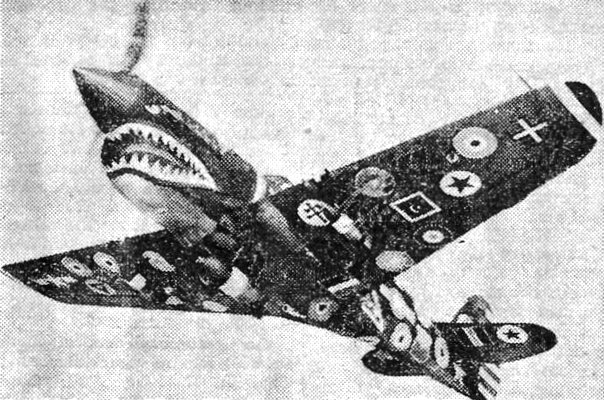 The nightmare paint job above is the 15,000th Curtiss Warhawk, recently turned loose from the Curtiss-Wright plant
at Buffalo, N.Y. Reason for all the insignia is to commemorate the 28 air forces which have used the famed P-40 since
the beginning of the war. Note the red-nosed spinner cap and shark-puss of the Flying Tigers.
The nightmare paint job above is the 15,000th Curtiss Warhawk, recently turned loose from the Curtiss-Wright plant
at Buffalo, N.Y. Reason for all the insignia is to commemorate the 28 air forces which have used the famed P-40 since
the beginning of the war. Note the red-nosed spinner cap and shark-puss of the Flying Tigers.
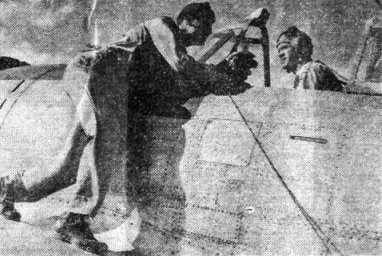 Lt. Bert Parks, of the India-Burma and China radio team, interviews Lt. Charles F. Heil, veteran of 500 combat hours
in the P-47's. Heil is a flight leader with the "Burma Banshees."
Lt. Bert Parks, of the India-Burma and China radio team, interviews Lt. Charles F. Heil, veteran of 500 combat hours
in the P-47's. Heil is a flight leader with the "Burma Banshees."
 G.I. shoes take a beating on China's cobble-stoned streets and rocky, mountainous roads. Above, Pvt. Sam Wong
(center) of Services of Supply salvage detachment checks the work of Chinese shoemakers.
G.I. shoes take a beating on China's cobble-stoned streets and rocky, mountainous roads. Above, Pvt. Sam Wong
(center) of Services of Supply salvage detachment checks the work of Chinese shoemakers.
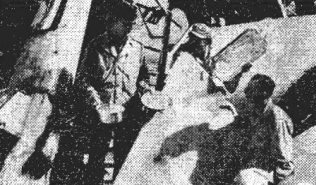 In China, junk aluminum is rendered into pots and pans for G.I. mess halls. Lt. Harry E. Fitzner, salvage officer,
and Pvts. Jack P. Medana and Lawrence L. Dugan examine the plane scrap and the
finished product.
In China, junk aluminum is rendered into pots and pans for G.I. mess halls. Lt. Harry E. Fitzner, salvage officer,
and Pvts. Jack P. Medana and Lawrence L. Dugan examine the plane scrap and the
finished product.
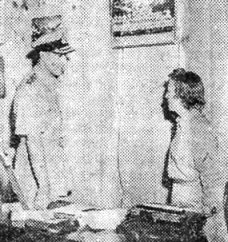 Pfc. Dora Anderson, American WAC, is complimented by Lord Louis Mountbatten, no less, for coolness in remaining
at strict attention when a cobra crawled dangerously close to an inspection formation at Kandy recently.
Pfc. Dora Anderson, American WAC, is complimented by Lord Louis Mountbatten, no less, for coolness in remaining
at strict attention when a cobra crawled dangerously close to an inspection formation at Kandy recently.
 Penny Bancroft visits the mess and chows with S/Sgt. John Star, S/Sgt. Meredith and friends.
Penny Bancroft visits the mess and chows with S/Sgt. John Star, S/Sgt. Meredith and friends.
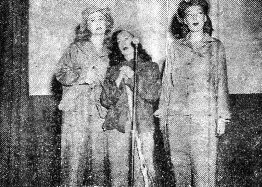 Annett MacQuarrie, Gigi Gilpin, and Penny Bancroft groan for the boys at APO 211.
Annett MacQuarrie, Gigi Gilpin, and Penny Bancroft groan for the boys at APO 211.
 Gigi Gilpin, S/Sgt. Tom Meredith, Capt. Ralph Wire and Lt. Pat Flynn of the Lightning Tigers.
Gigi Gilpin, S/Sgt. Tom Meredith, Capt. Ralph Wire and Lt. Pat Flynn of the Lightning Tigers.
